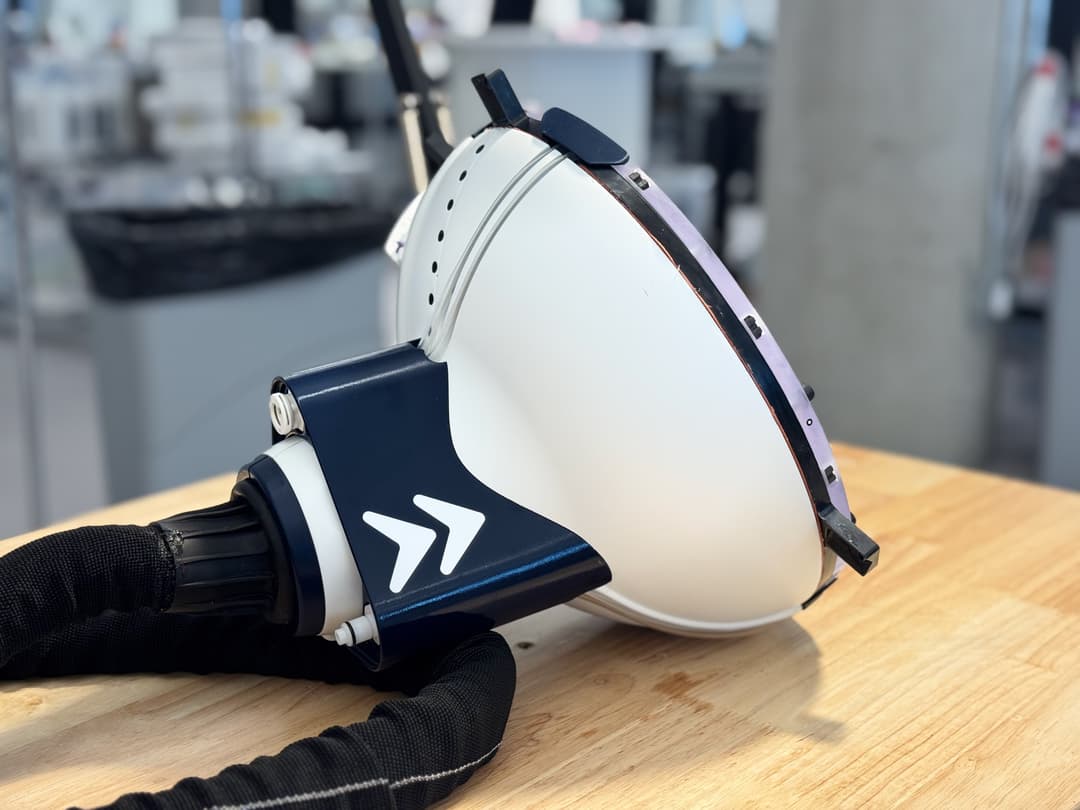Advanced Prosthetics Made Accessible: How PSYONIC Developed a Bionic Hand Using Additive Manufacturing
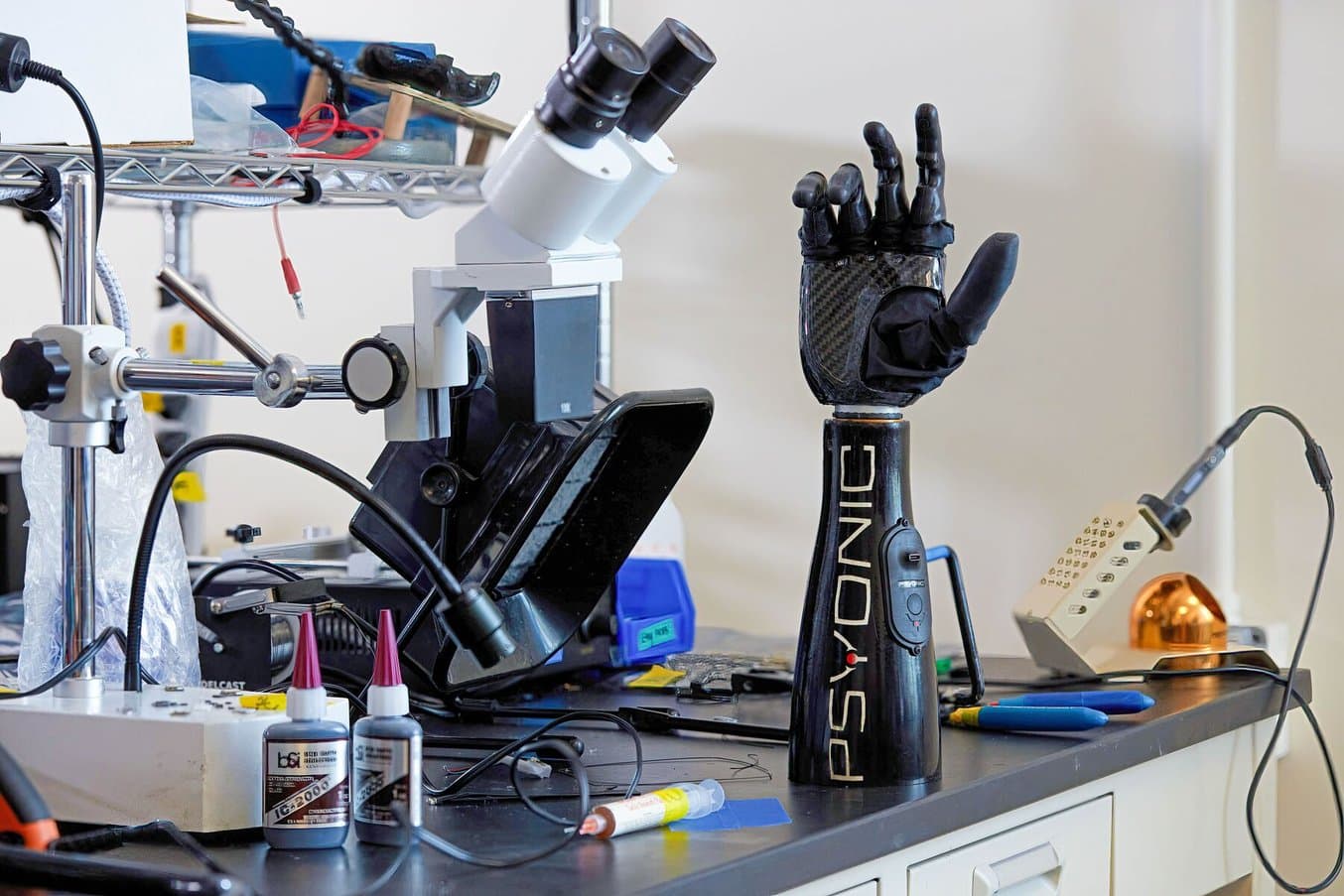
Around the world over 50 million people suffer limb amputation1 due to traumatic causes. For patients recovering from a medical emergency, entering the new world of prosthetics can be painful. Most want to return to normal life: to drive a car, to workout at the gym, to clean up around the house. But most traditional prosthetic limbs are crude, expensive, and fragile. Approximately 10% of patients requiring an advanced prosthetic arm can afford them today.
One company trying to upend the market is PSYONIC, creator of the Ability Hand. Designed and manufactured in-house with hybrid manufacturing methods, including 3D printing, injection and silicone molding, and CNC machines, the Ability Hand is promising to restore their life, and mobility, back to what it was.
What was PSYONIC able to accomplish with Formlabs SLA 3D printers?
- Create an FDA-registered, Medicare-covered, industry-defining upper-limb prosthesis from scratch.
- Collect customer feedback and rapidly prototype in-house to improve the Ability Hand’s design and functionality.
- Deploy a true hybrid manufacturing production method to deliver the Ability Hand at an affordable price.
- Help patients return to their normal lives, including Sergeant Garrett Anderson.
- Increase affordability and access from 10% to 75% of patients
- Utilize new durable and impact-resistant 3D printing materials to create long-lasting end-use parts
In this post, we sit down with CEO Aadeel Akhtar, PhD and lead Mechanical Engineer James Austin to learn how they built the Ability Hand, why this market is so underserved, and how 3D printing was a vital part of their go-to-market strategy. We’ll also meet Sergeant Garrett Anderson, one of the first power-users of the Ability Hand.
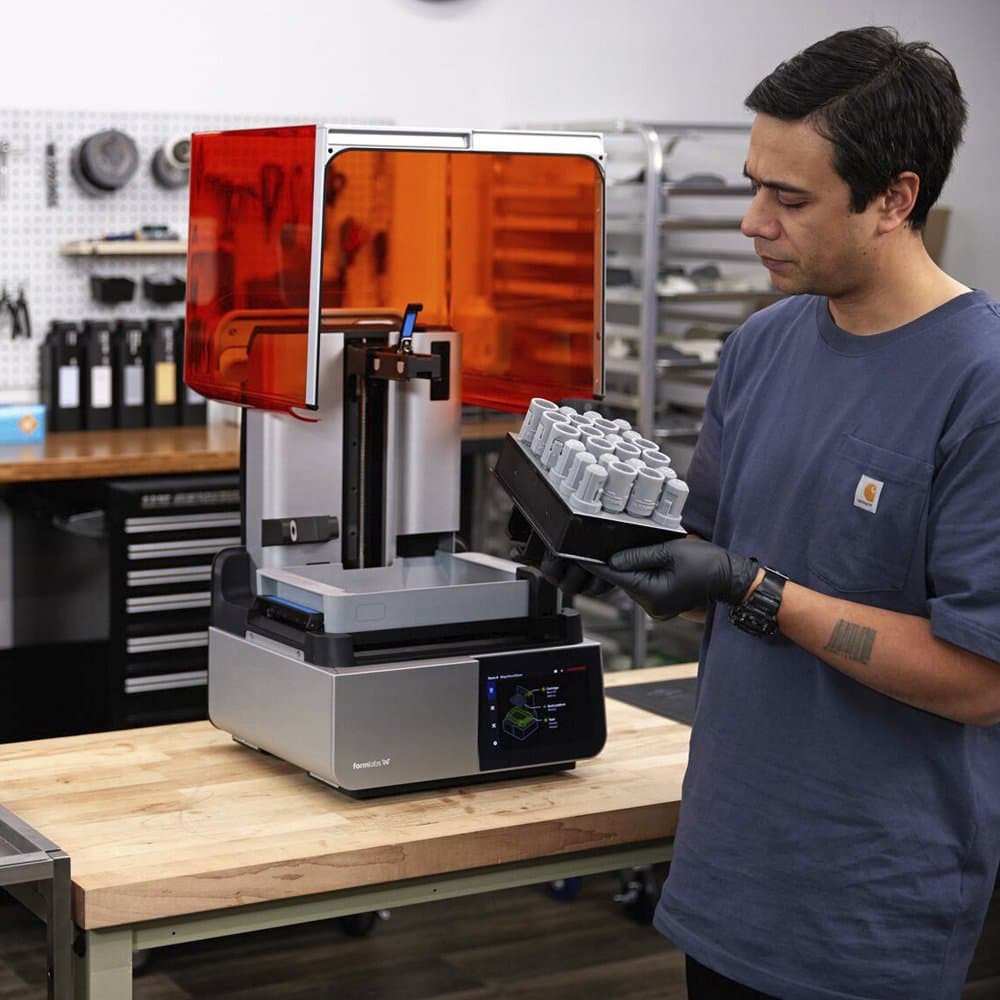
Book a Demo
Learn about Formlabs products through a virtual live demonstration.
The Need for a Better Upper-Limb Solution
In 2005, while deployed in Iraq, Sergeant Garrett Anderson’s vehicle was hit by a roadside bomb. Later diagnosed with mild traumatic brain injuries and a broken jaw, Anderson had to have his right arm removed below the elbow. Upon returning home, much of his life returned to normal, but he still faced challenges; he enrolled in Illinois State University, obtained an undergraduate and Master’s degree, and had two children.
The current market for artificial limbs is antiquated, with hooks sometimes still being used for basic functionality. Despite rapid advancements made in other prominent medical fields over the years, prosthetics remain stuck in the past.
Anderson eventually came in contact with a young PhD student named Aadeel Akhtar. Like Anderson, Akhtar was not satisfied with the current state of prosthetics. “This is something that I've wanted to do my entire life, ever since I was seven years old. My parents are from Pakistan. I was visiting and that's the first time I met someone with a limb difference. She was my age missing her right leg and using a tree branch as a crutch. And that's what inspired me to want to go into this field and build the most advanced bionic devices, and make them accessible to everyone.”
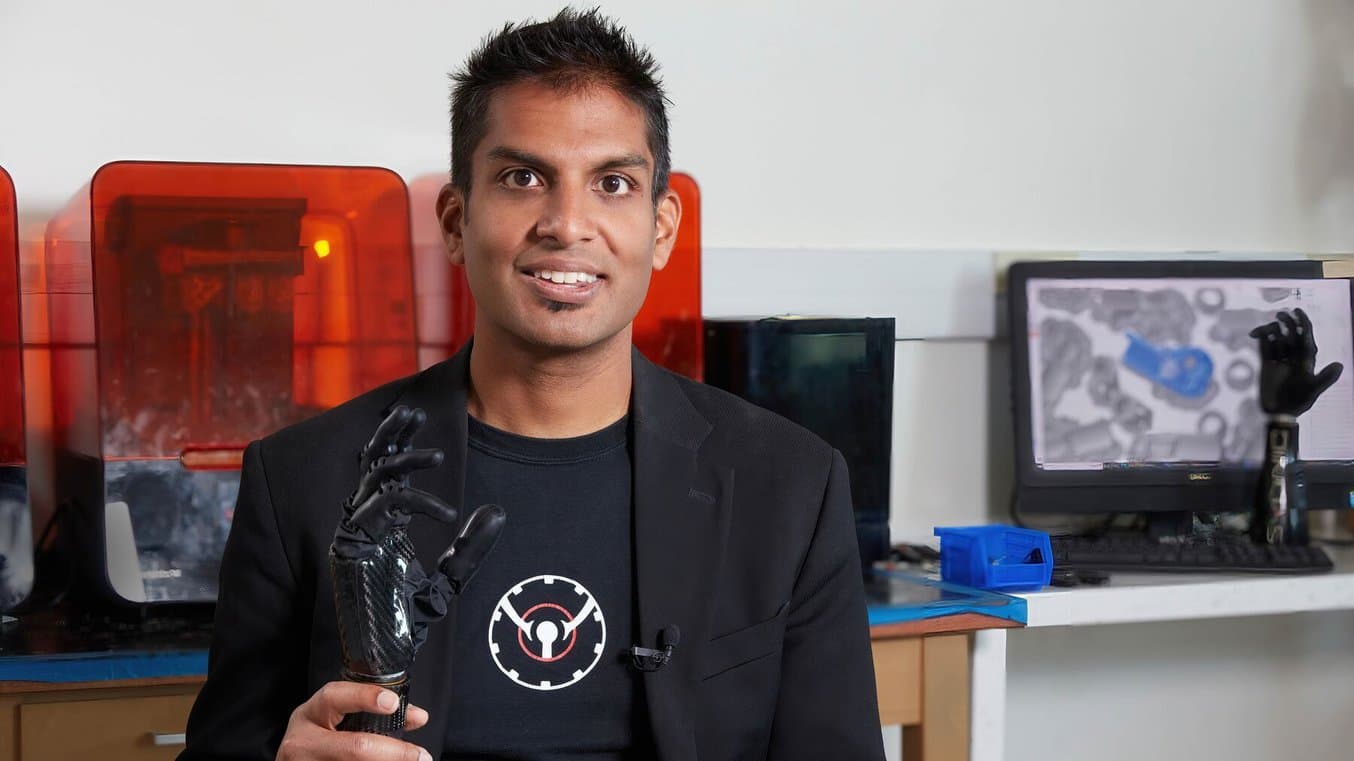
CEO Aadeel Akhtar, PhD, holds the most recent version of the Ability Hand.
But getting an industry-defining new prosthesis product to market was no easy task. “Over the last seven years, we've gone through nine different prototypes of the Ability Hand, which is now available nationwide in the United States, FDA registered, and covered by Medicare,” Akhtar said.
What Modern Hybrid Manufacturing Looks Like
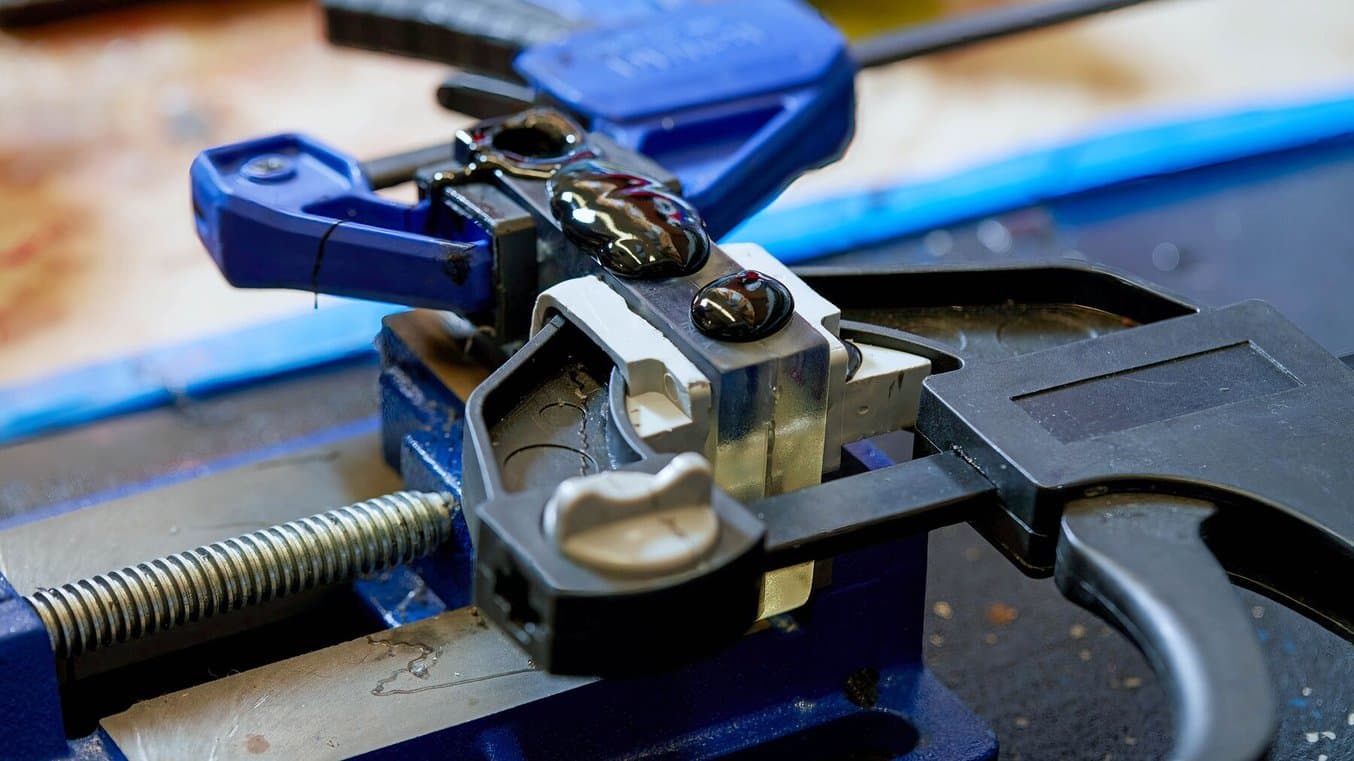
Increasingly, both large and small firms have turned to in-house 3D printing to help prototype and bring new products to market. In spaces with high upfront R&D costs, such as medical device manufacturing, 3D printing has become a vital tool in the engineering team’s toolbox.
A truly next-generation prosthesis needs to be fast to respond to user inputs, tough and durable so as to not break during daily tasks, lightweight so as to not tire the user and cramp their arm, and deliver real, sensory feedback. No small feat!
What has changed in device manufacturing to allow a small company like PSYONIC to upend the market for traditional prostheses?
- 3D printing has been ubiquitous in prototyping and product development for decades. Now this maturing technology, specifically selective laser sintering (SLS) and stereolithography (SLA) printing, is entering widespread use in manufacturing.
- Improved technology for high-throughput and high-quality printing of final end-use parts, and a variety of improved materials, make 3D printing practical for creating new medical devices.
- In addition to fabricating end-use parts directly, 3D printing offers compelling advantages in “hybrid production,” as an intermediate process alongside conventional processes, for instance in fabricating molds, tools, patterns, fixtures, and jigs. This is known as rapid tooling and manufacturing aids.
Austin told us that “mixing and matching manufacturing methods is extremely important, I think, to startups in general, but especially to PSYONIC. There's no way we could have competed with other prosthetics companies at our size if we had to abide by purely traditional manufacturing. Things like CNC machining, and injection molding, the initial costs, especially for trying to prototype things with multiple iterations, would've just been far too astronomical for us to do. But with the advent of 3D printing and various kinds of 3D printing, we've been able to prototype rapidly, change our iterations and produce things at low scale and low cost. 3D printing, especially the Formlabs resin 3D printers, has come in absolutely critical for that development process for a startup our size.”
Let’s take a look at some of the ways PSYONIC uses in-house 3D printing to build the Ability Hand.
In-House Carbon Fiber Molds
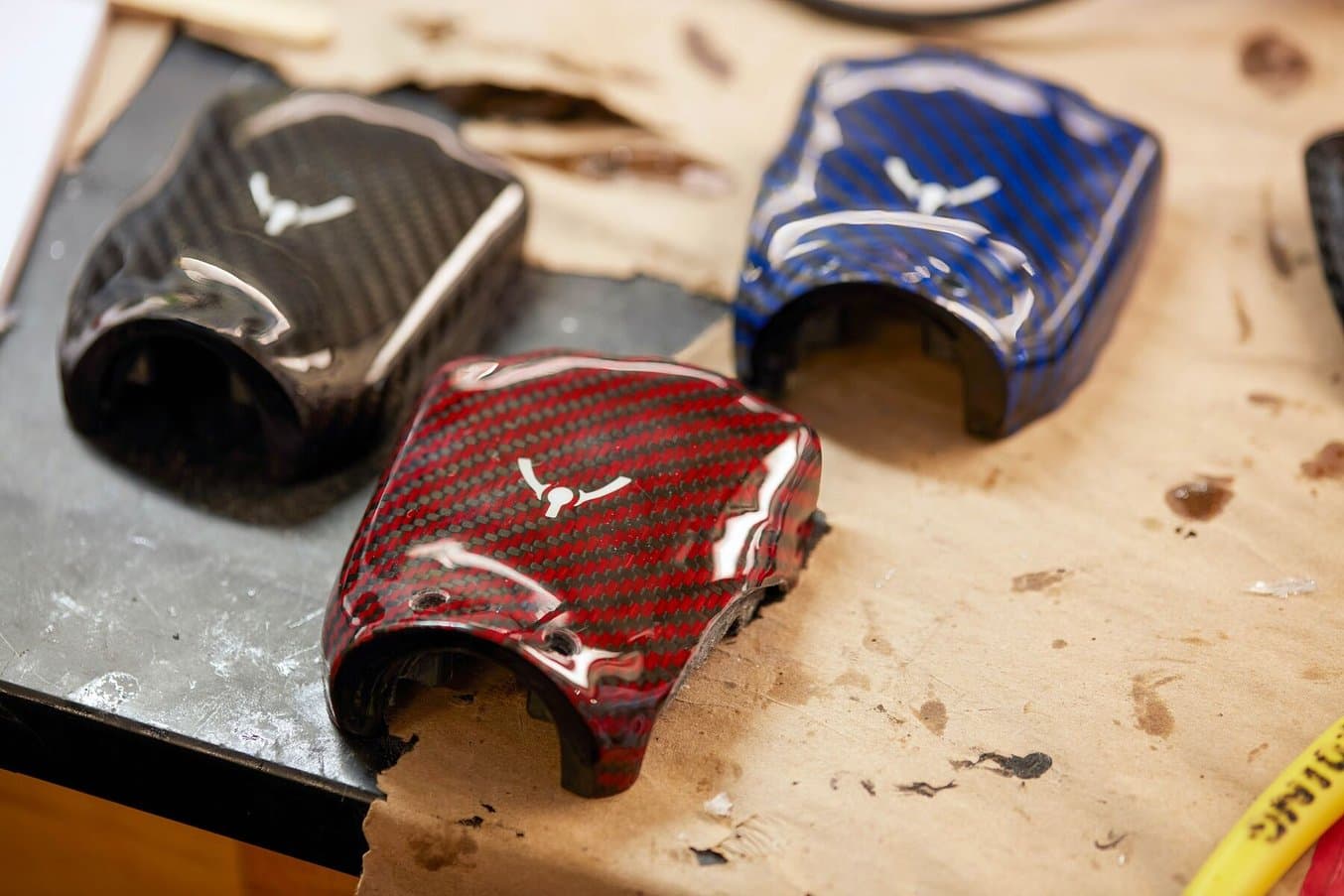
In-house carbon fiber molding helped PSYONIC improve the design of the Ability Hand.
Carbon fiber is a powerful material to build with, as it increases the overall durability and rigidity of the Ability Hand while reducing weight. However, traditional molds are expensive, making it prohibited to iterate and create the right number of molds for small-batch production. But today, companies don’t have to choose between additive manufacturing and traditional CNC machines, they can simply do both.
Austin explained to us, “in the early iterations of the carbon fiber mold, SLA 3D printing was actually quite important. We didn't have the resources to produce molds for the carbon fiber, for example, by machining. So what we did instead was we would produce molds using High Temp Resin. This was fragile, but heat resistant, which allowed us to press the carbon fiber sheets into the exact shape we wanted, put them in an oven for high temperature to cure them, and then adhere them to our hand.”
3D printed molds for manufacturing carbon fiber parts can reduce costs and lower lead times. Engineers can directly print the mold at low costs and within a few hours without having to hand carve it or deal with CNC equipment. With High Temp Resin and Rigid 10K Resin, growing medical device firms such as PSYONIC can achieve complicated mold shapes with fine details that would be difficult to manufacture with traditional methods.
Austin deployed High Temp Resin to create multiple molds, affordably testing his design as he went. He told us that, “if we didn't like the shape, we just changed it in CAD, put it on the 3D printer again, had another High Temp Resin block come out and we were good to iterate. For long-term sustainability, we eventually switched over to machining molds, but for that early prototyping, short-term tests, the High Temp Resin on the Form 3 printers was really useful.” High Temp Resin has a heat deflection temperature (HDT) of 238°C @ 0.45 MPa and is able to sustain the heat and pressure of an autoclave.
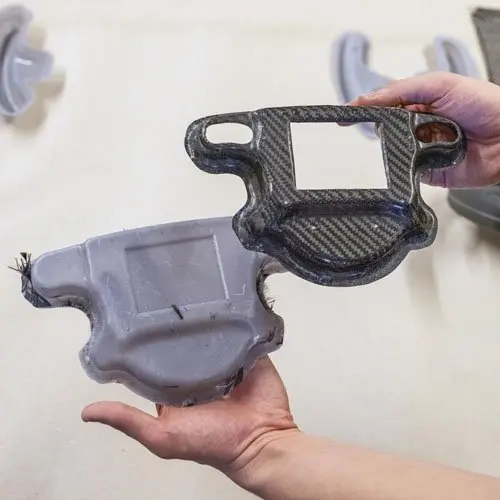
Carbon Fiber Parts Manufacturing With 3D Printed Molds
Download this white paper for composite mold design guidelines and step-by-step guides to the prepreg and hand laminating methods to create carbon fiber parts.
Reverse Engineering
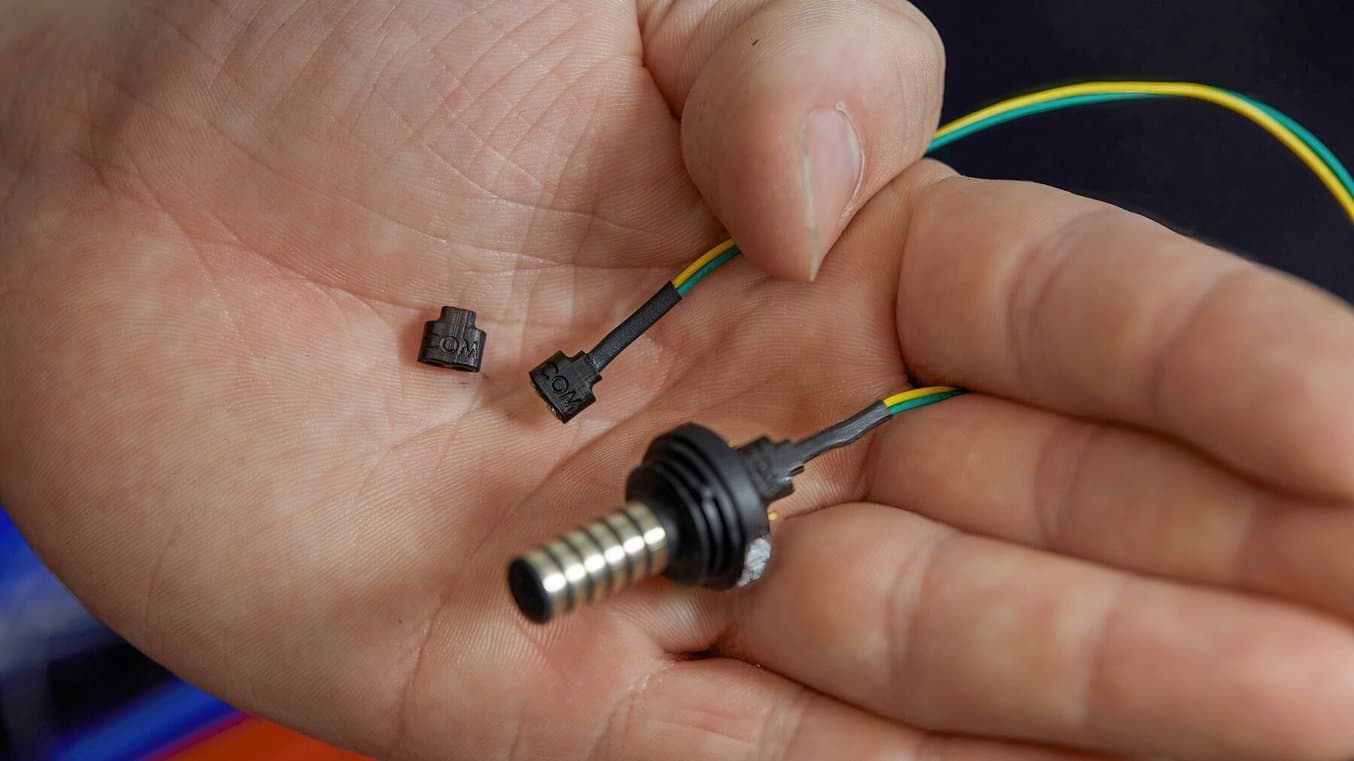
To help reduce costs, PSYONIC reverse engineered small connectors.
Reverse engineering is a powerful way to create digital designs from a physical part, and can be a valuable tool in an engineer’s prototyping toolkit. A skilled engineering team and industrial 3D printer can reverse engineer parts quickly, reducing delays in production.
Anyone working in the medical field knows how expensive proprietary parts can be, with sometimes even small clips costing hundreds of dollars to replace. For small businesses such as PSYONIC, the price of first-part replacement parts can be prohibitive.
PSYONIC took matters into their own hands, once again turning to their in-house 3D printers to speed along development and cut costs. Austin told us that, “there are, occasionally, parts that we need to be compatible with other companies’ products, and these can sometimes be purchased, although, like many things in the medical industry, they come at an exorbitant cost. For smaller parts, we actually have the capacity to fairly easily reverse engineer the shape and form, and then simply produce them ourselves in house.”
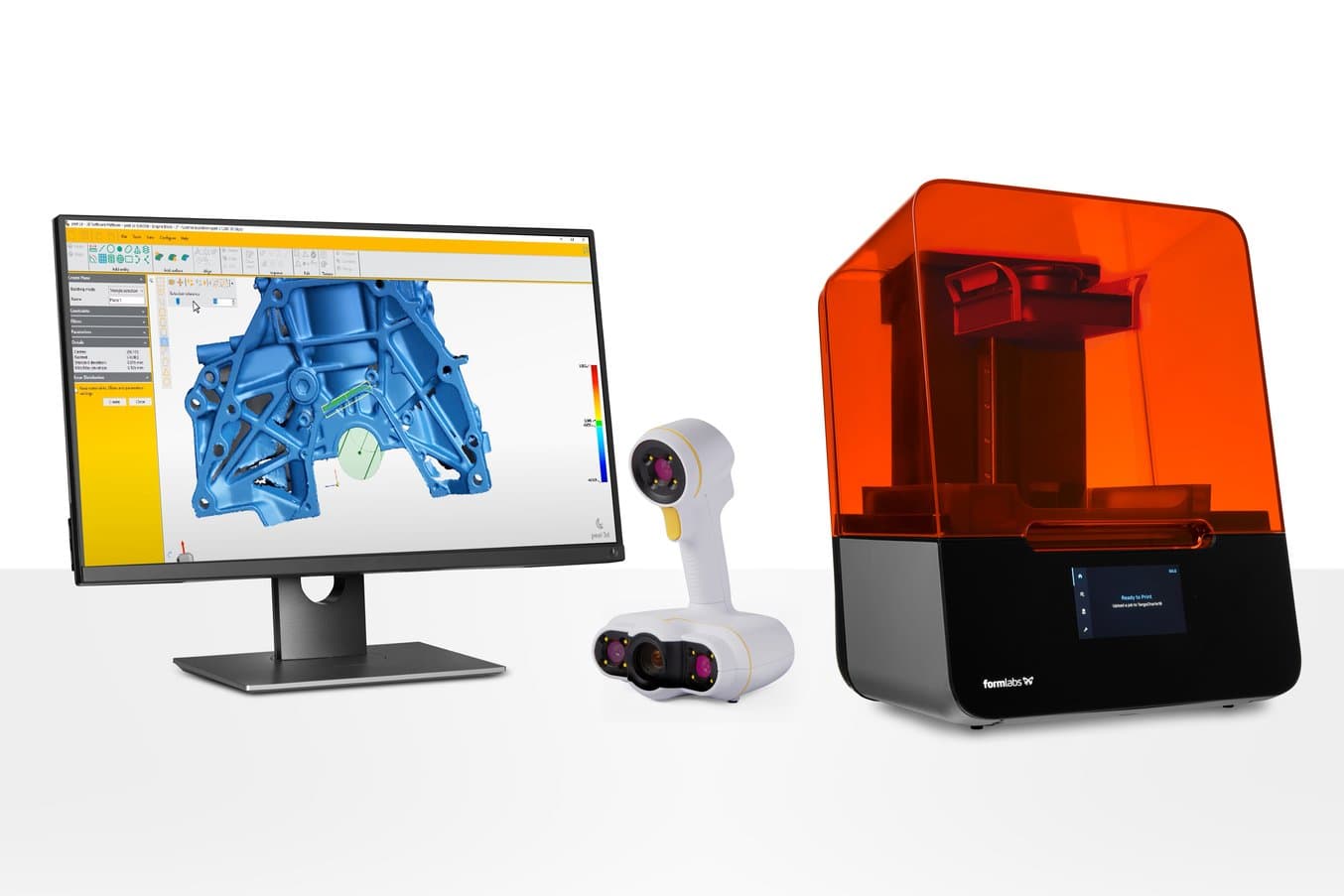
3D Scanning and 3D Printing for Reverse Engineering and Other Applications
Download this white paper to understand how 3D scanning and 3D printing work in tandem to empower reverse engineering. The report comes with an overview of the current 3D scanner market.
Rapid Tooling for Injection & Silicone Molding
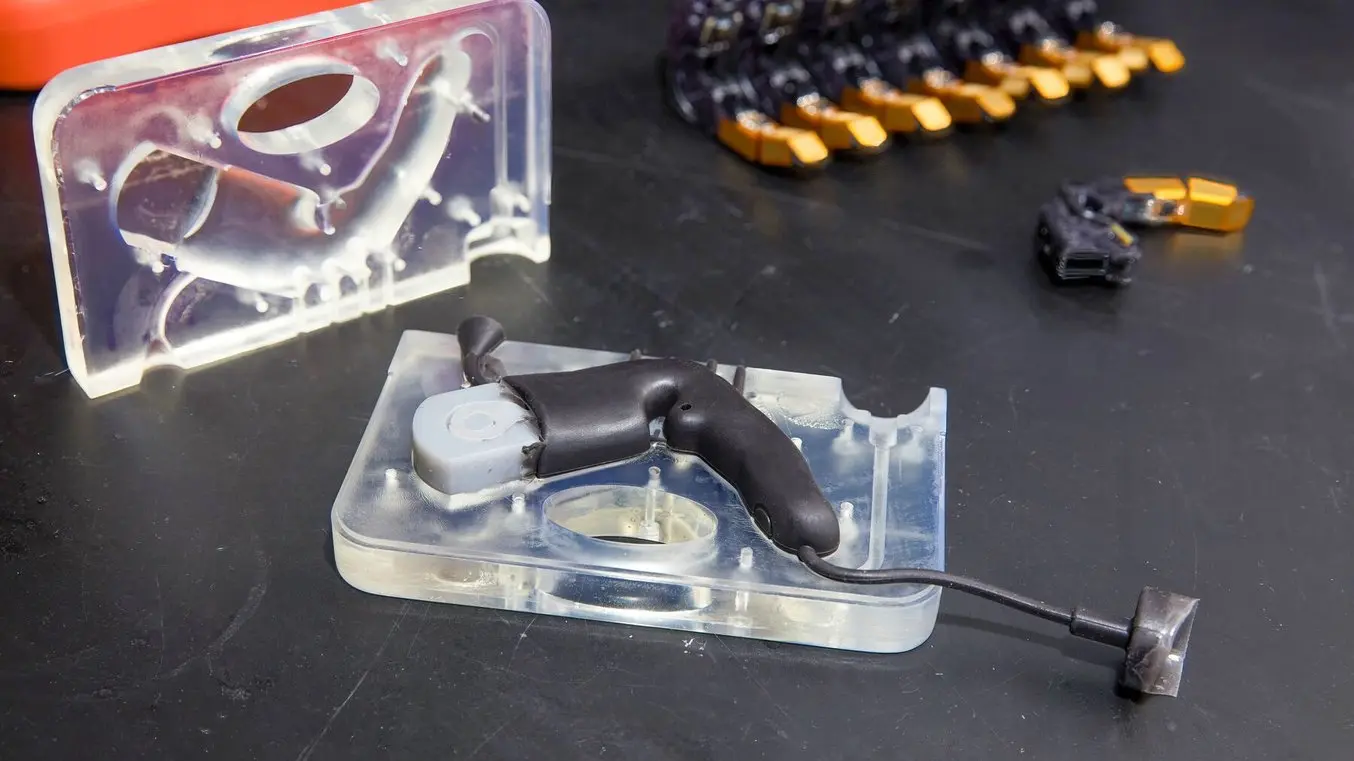
Bringing short-run injection molding into the medical device development process can be a boon for many engineering teams. When starting off creating a new product, producing smaller batches of end-use parts using rapid tooling is an effective and affordable way to bridge the gap between prototyping and mass production with expensive hard tooling. The PSYONIC team started by 3D printing every part of the Ability Hand, including the fingers, in order to reduce costs. They quickly found the need to mold more sturdy fingers, and switched to 3D printing molds instead of the fingers directly.
Akhtar talked about this transition, telling us, “some of the biggest challenges we've faced are how to make this hand still low cost for us to manufacture, but more durable than anything else that's out there. And when we first started building these hands, we were 3D printing the entire thing and making it super cost effective. But when we talked with hundreds of patients and clinicians, the number one thing they complained about was that their $50,000 bionic hand was breaking. They would accidentally hit it on the side of a table and because the fingers were made out of rigid 3D printed components, they would just snap at the joints and break, but our own fingers, they're flexible. So when you hit them, they actually flex out of the way and come back. And it was that kind of functionality that we wanted to build into our prosthetic hand to make them more durable than anything else.”
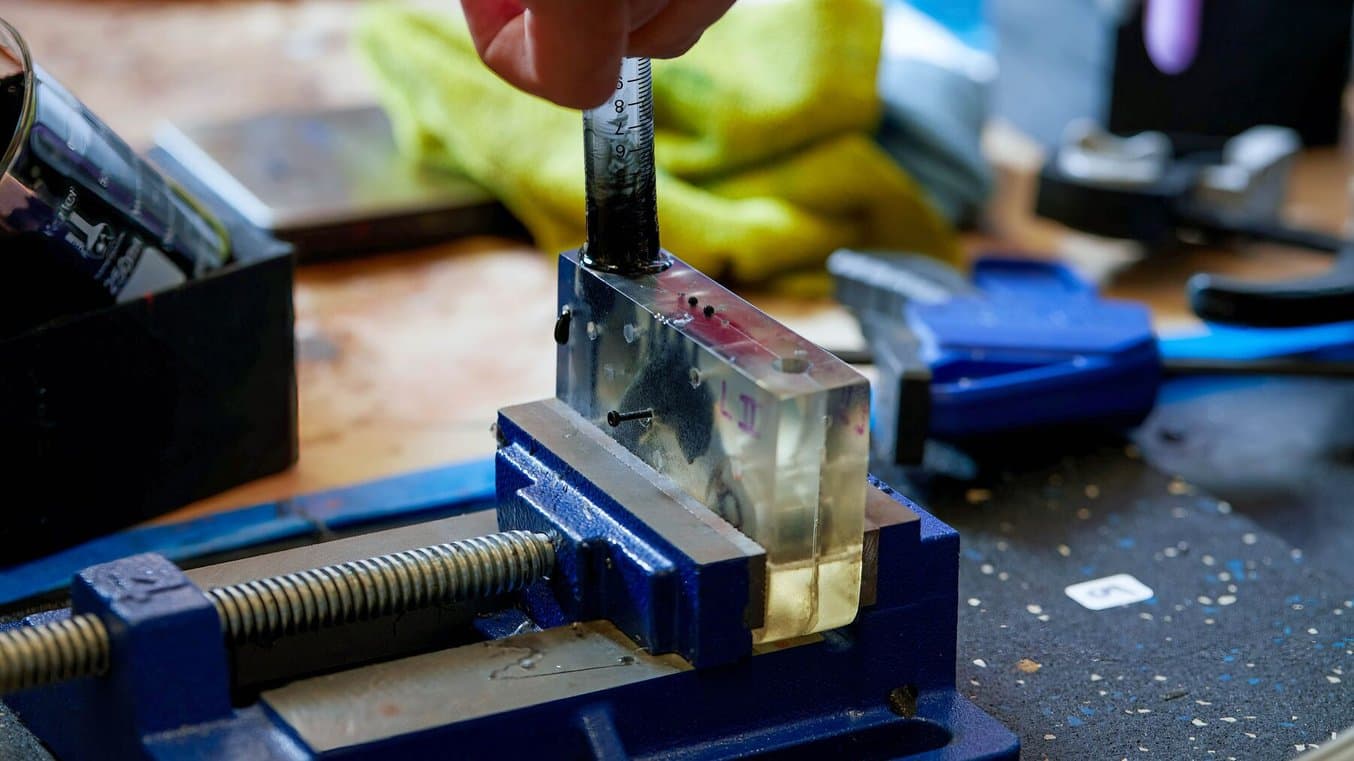
The team started by using fused deposition modeling (FDM) 3D printers to create their molds. FDM printers offer quick and cheap prints, but often struggle to hold up to high-pressure situations. Molds need to be super smooth and printed at high resolution, making SLA a better fit. Austin told us, “the molding process for our fingers was actually something we've been using for a long time with FDM printed molds originally. But these had a number of problems for injection, primarily that the surface finish was not nice. You would get the striations that are very typical of FDM printed objects, as they're done layer by layer. And all our molded items would end up with these odd striated striped textures on top. Once we switched over to using Clear Resin, we were able to obtain a much smoother surface finish because of the higher resolution. So we would produce these molds by taking the inverse of the finger or thumb shape that we wanted, subtracting it from a block, and adding runners and inlets for the two part silicone to be injected. Once that mold had been designed and printed on a 3D printer, we would put a 3D printed bone inside it, which forms the skeleton of the finger.”
He continued, “we would clamp the Clear Resin mold around it, mix up some platinum cure two part silicone, inject it using a syringe by hand into a hole in the mold and fill the mold with this two part silicone that encased the finger entirely. And when it came out, you had this nice, fresh finger. And we've gotten many, many uses out of these molds. You can use them open over again, probably dozens and dozens of times. The only limitation is that Clear Resin is that they do get worn down over time, mostly just by handling. But even when that happens, it's easy enough to just stick another run on the printer, and within 24 hours, because of the high resolution we print them at, we've got another mold and we're ready to go molding some more fingers.”
Austin used the highest resolution possible when printing on his Form 3 (25 microns) for creating both his end-use parts and molds. Austin told us that “we print at the highest resolution possible for all our materials. For the Tough 1500 Resin parts, it's because they fit together precisely. They have a very tight fit inside the hand and around the components they enclose. Any variation or tolerance in this could cause excessive friction during movement or corresponding pieces to be misaligned, so they need to be made as precisely as possible in order to achieve optimal fit and functionality. For the molds, the reason that we run them at the absolute highest resolution is because the surface finish needs to be as smooth as possible. And then washing it very thoroughly with the Form Wash to get an extremely slick surface that you can see reflected in the silicone that we mold in those parts afterwards.”
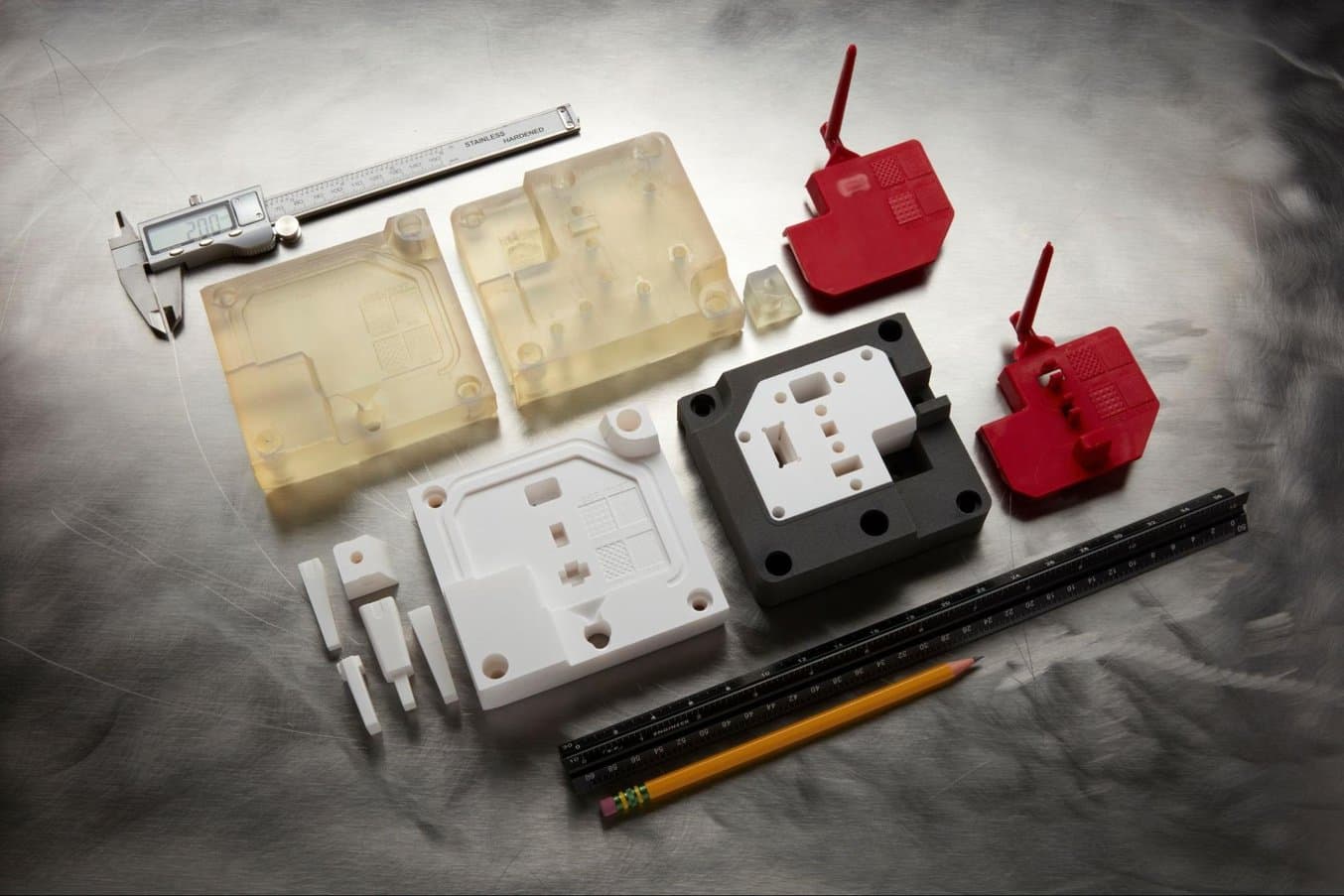
Guide to Rapid Tooling
In this white paper, learn how to combine rapid tooling with traditional manufacturing processes like injection molding, thermoforming, or casting.
Turning Customer Feedback Into Rapid Prototyping
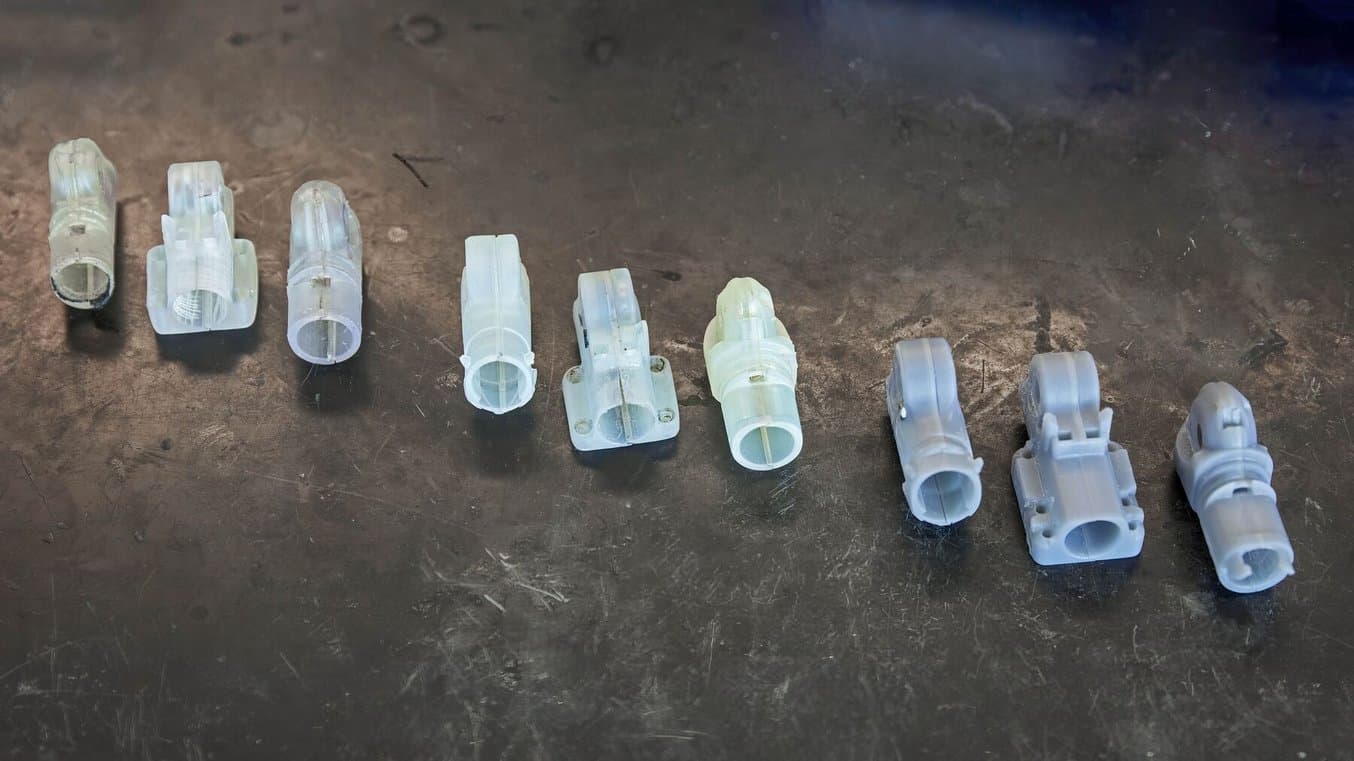
PSYONIC has prototyped countless numbers of parts over the past few years, incorporating customer feedback into the design of the Ability Hand.
For any new device, rapid prototyping plays a vital role during the development process. For medical devices, it brings on new importance as parts receive significant feedback from patients and end-users. Medical device firms will often go through hundreds of prototypes of a single part before being ready for field testing, let alone being rigorous enough to pass regulatory and clinical hurdles. Austin has seen this issue up close when testing the Ability Hand, saying that “we have had several occasions where a patient will perhaps break something in a way that I didn't realize was as likely as it was, and I've noticed that there was an easy way to fix it. And I've changed it, implemented it, run a prototype, run a test and had it in a new Ability Hand, going out within a week or two.”
Austin told us that, “we try to balance our manufacturing methods to optimize what we need to do at the moment. A lot of our prototypes will start out being made in FDM printed plastic or in SLA printed resin, and then once we decide we're settled on a fairly final design, we may get it remade using, for example, a CNC machine in metal, which is more expensive and more time consuming, but more durable long term. Some things are perfectly fine to be kept as SLA, they work great in resin. Some things have a bit more durability once we switch them over to metal. Having all these options means that we can really mix and match to optimize for any individual part, to really make sure that we get the best bang for our buck. The lowest manufacturing cost, but the highest performance.”
3D Printing End-Use Parts
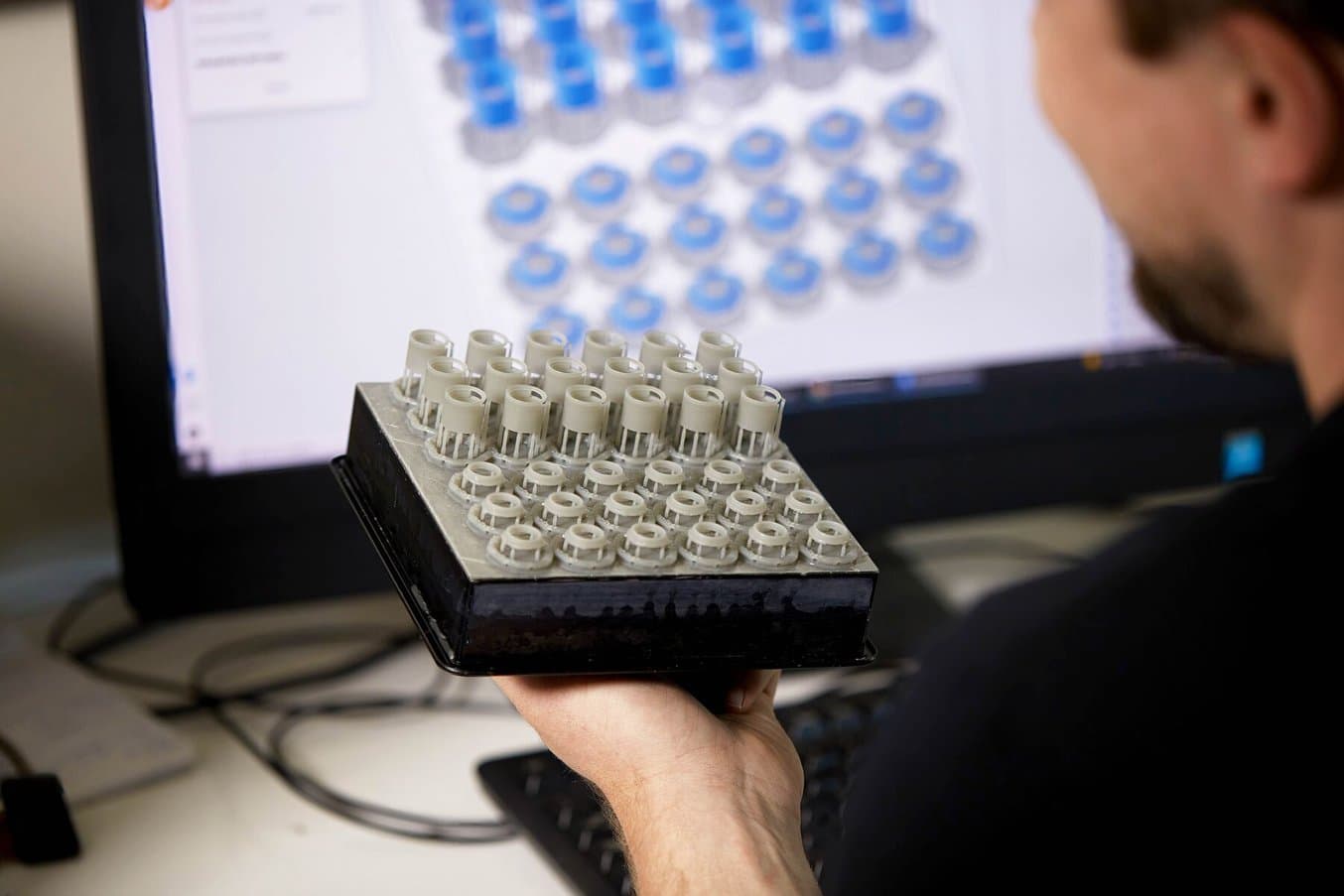
Here, Austin holds a fresh batch of end-use parts printed in Tough 1500 Resin.
With recent advancements in 3D printing materials, parts that come right off the printer are often suitable for customer-facing models or even end-use parts themselves, reducing the need for expensive traditional tooling and greatly reducing development times.
Printing in Tough 1500 Resin, Austin found a material which excels at creating numerous end-use parts on the Ability Hand.
“While some of the 3D printing we do with SLA printing is primarily for prototypes. A lot of it is in fact, still for end-use products. This is especially true of the Tough 1500 Resin, which is still superior to any other 3D printed item we could make at that level of resolution and much more efficient economically than injection molding. For our purposes, at the scale we manufacture and the physical needs we have for the parts in terms of strength, resolution, physical property, thermal resistance, impact resistance, Tough 1500 Resin is honestly the best thing we've found and we continue to use it in all our commercial devices,” Austin told us.
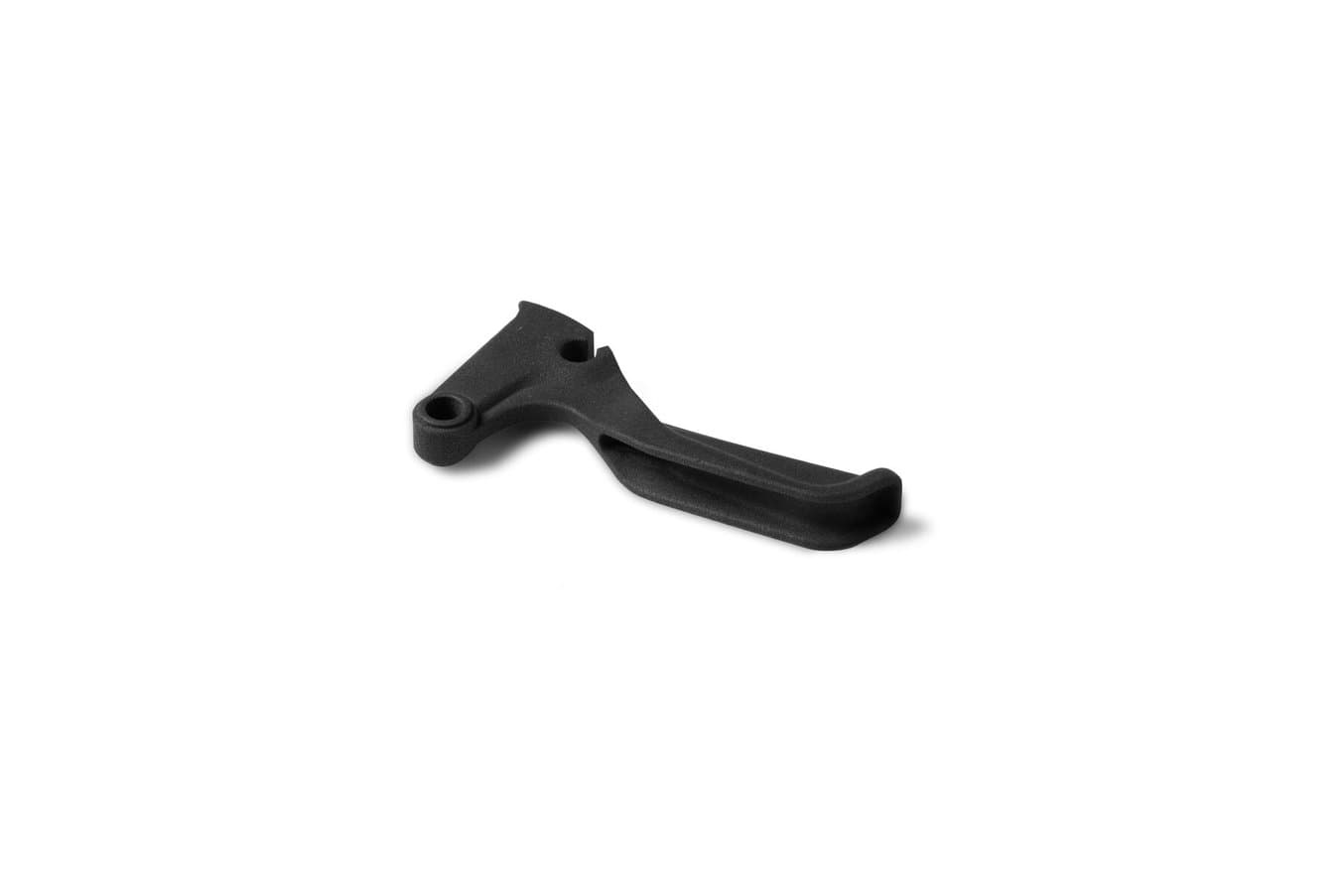
Request a Free Sample Part
See and feel Formlabs quality firsthand. We’ll ship a free sample part to your office.
Devices That Can Survive Anyone
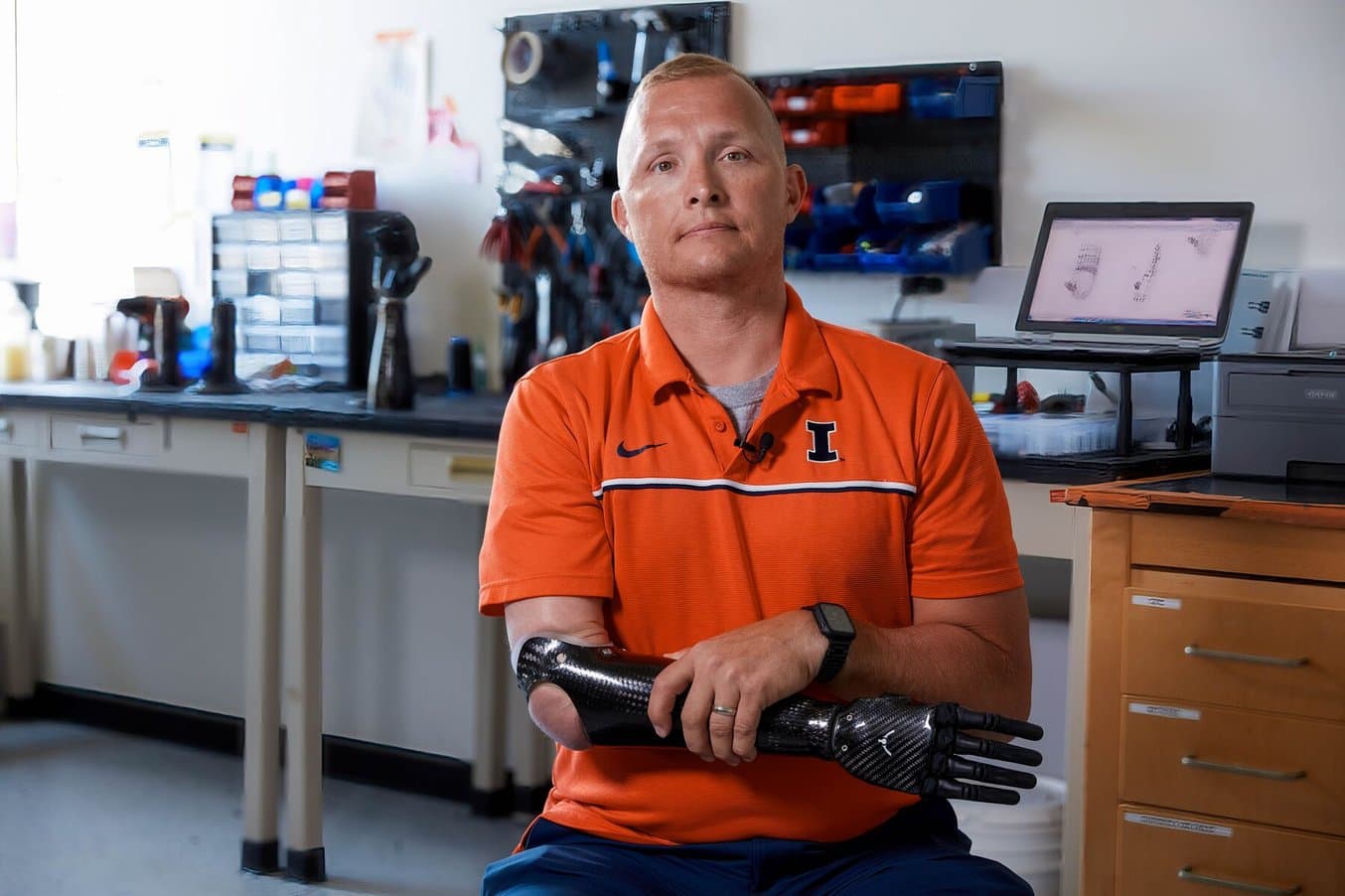
Growing PSYONIC as a business has pushed Akhtar and his team, requiring modern hybrid manufacturing techniques and innovative engineering solutions. Next, PSYONIC is looking to scale and bring their product to users all over the world. For now, growth is focused on the North American market, with the production of Ability Hands ramping in late 2022.
“Our patients, what they're looking to do is their normal activities of daily living. And a lot of the time with the devices that are out there, you couldn't even do some of those simple tasks, and we’ve gone above and beyond that. And that was because of a lot of the innovations that we've put into the design of our Ability Hand,” Akhtar said. Anderson added that, “Earlier this year was the first time I actually could feel touching my daughter's hand with this prosthetic hand because of the sensory feedback.”


